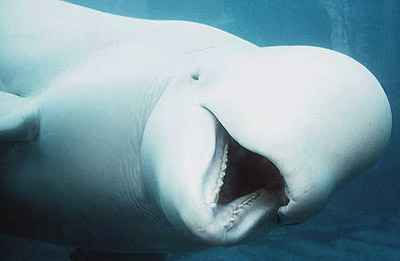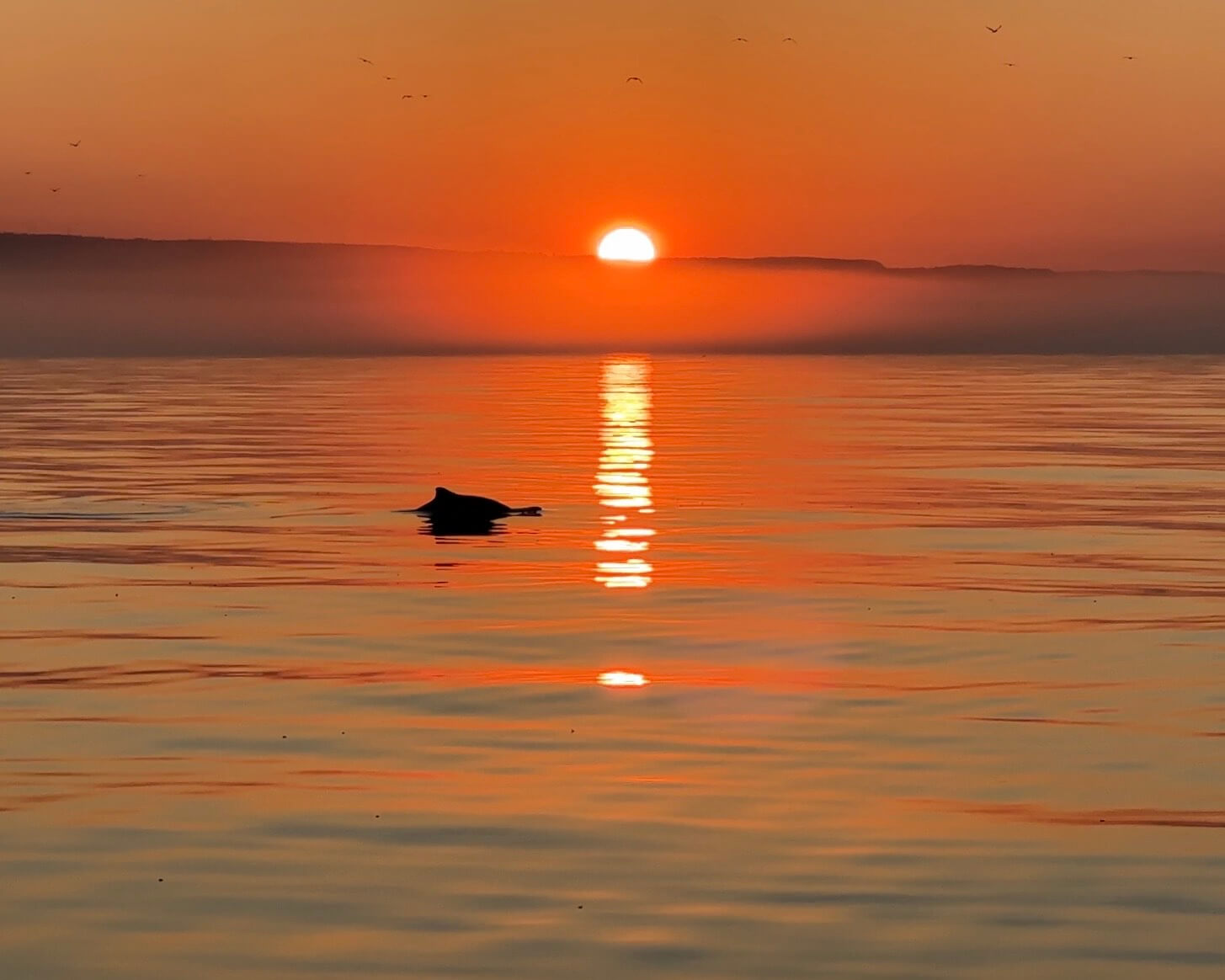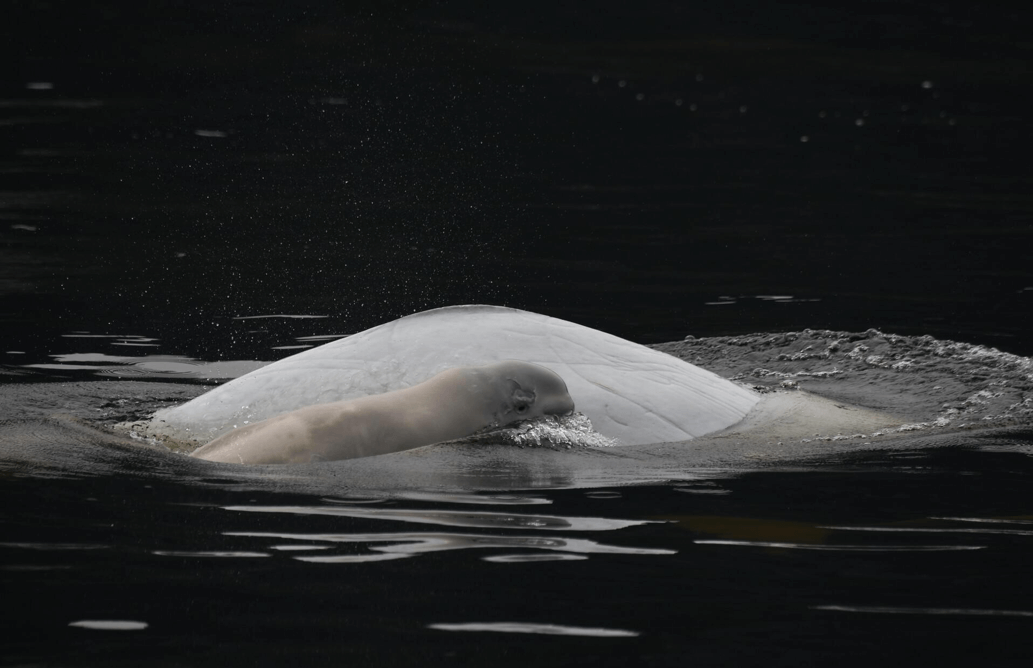Teeth
The odontocetes includes monodontidae (belugas and narwhals), beaked whales, sperm whales, dolphins (including killer whales and pilot whales) and porpoises, for a total of about 75 species. Toothed whale species are much more numerous than baleen whale species.
The number of teeth of which varies from one species to another. Certain species of dolphins have over 160 teeth; in some species of beaked whales, however, the teeth of females will never develop to protrude out of the gums. The sperm whale is the largest of the toothed whales; it has between 30 and 60 teeth, which develop on the lower mandible only. Teeth do not seem to be essential however, as whales have already been found with missing or severely worn teeth, or with fractured jaws, but which were nevertheless able to feed. The largest whale tooth is found in the male narwhal: its long tusk is actually the upper left canine growing in a spiral, piercing the upper lip and reaching up to 2.7 metres long. This tooth is believed to be a secondary sexual characteristic or a sensory organ. It has been seen in a drone footage that narwhals also use the tooth to knock out cod fishes in the Arctic.








